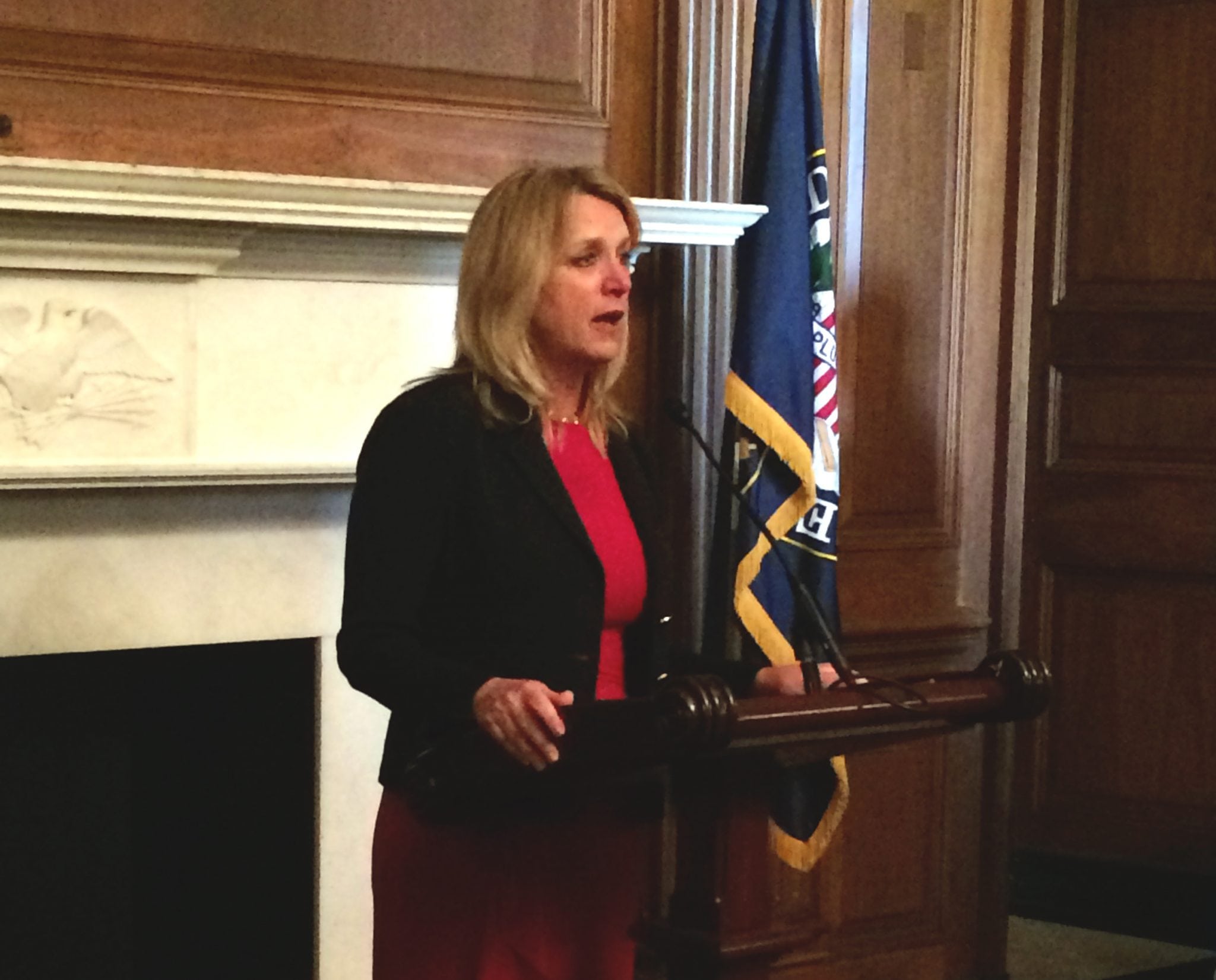[Avionics Today 09-16-2016] Air Force Secretary Deborah Lee James is calling for Congress to lift sequestration and pass a full-up, two-year funding plan before the end of the year to support necessary aircraft procurements and modifications, among other aerospace and defense efforts. With current funding set to expire Sept. 30, James is pushing for Congress to approve funding along the lines of the President’s proposed FY2016 budget, in order to prevent the pit-falls of tight funding, which could come in the form of continued sequestration or a long-term Continuing Resolution (CR).
 |
| US Air Force Secretary Deborah Lee James. Photo: Avionics Magazine/Juliet Van Wagenen |
“The additional $10 billion under the President’s budget that we very much want to obtain, we’re investing in readiness against that high-end fight, readiness for Intelligence, Surveillance and Reconnaissance (ISR), which is so much of what is happening and required over Syria today. We are investing in people, the additional end strength [of a 7,000-person increase for nuclear, cyber and to plug some maintenance holes]. And we are investing in our modernization as well,” James told Avionics Magazine during an interview at the Senate Aerospace Caucus Reception on Sept. 15. “$10 billion of those investments would go away under sequestration. $13.4 billion of that investment would go away under a long-term CR.”
The Air Force requested funding in the way of $122.2 billion for fiscal year 2016 in order to upgrade the unit’s aging fleet and address future needs. During the reception, James stressed that aircraft modernization initiatives have already been impacted by budget caps set by the Budget Control Act (BCA) of 2011, alongside personnel deficits — which James told Avionics is at its lowest level since 1947, the year the Air Force became a separate service — and the Air Force’s readiness to go up against a high-end fight.
“We have far fewer people, our ops tempo has gone through the roof, we are an air force in demand — I don’t see it going down anytime soon. And if you add to that the third factor, which is that our aircraft — the cornerstone of the aerospace industry — our aircraft are aging out and we are not modernizing them, currently, at a sufficient rate,” said James during her keynote speech at the reception, noting that perhaps the most worrisome statistic was that half of the U.S. Air Force’s combat air forces are not sufficiently ready to go into a high end fight, in the eyes of commanders.
Currently, the average age of an aircraft in the Air Force is 27 years, according to James, who expressed the need to renew aging fleets and upgrade systems, outside of maintaining current aircraft.
“We are spending more and more on maintenance and less and less on new starts and new production. This is a recipe, if we are not careful, for going out of business. We have got to shift the dynamics on this, these have been terrific aircraft but it is time to ramp up the production on the new,” said James.
Already, the Air Force has allocated funding to procure 44 new F-35 aircraft in its 2016 budget materials as well as extend the life of its B-2 Spirit aircraft by upgrading the B-2’s Defensive Management Systems-Modernization (DMS-M), the Common Very Low Frequency/Low Frequency Receiver (CVR). The DMS-M program enables penetration of dense threat environments while CVR adds survivable communications capability to the platform, according to the budget materials.
After the three-month short-term CR Congress is likely to pass runs out in December, however, James predicts these and similar programs could come up against a funding wall.
“With CRs, as you know, there are no new starts. We believe in the air force, under the no new starts rule, we would be affected to the tune of about 50 programs. Most of those — like 75 percent of those — are smaller programs. That doesn’t mean they are not important, but they are smaller programs. But the remaining 25 percent are larger programs, such as B-2 communications upgrades, our replacement for the UH1N helicopter, the helicopters in support of our nuclear enterprise … and several others as well. There’s the space programs that fall into this larger category. That would be the impact of the no new starts,” said James.
The long-term CR could also cut F-35A procurement in the way of 14 aircraft, alongside other necessary cuts, such as the KC-46A Pegasus tanker aircraft, for which the service allocated funds to procure 12 new aircraft in 2016.
“It would impact some of our most important top programs, like the procurement quantities on the F-35,” James said in her speech. “You know we want to ramp up, we are programmed to ramp up, you can’t ramp up quantities under a long-term CR. It would impact the F-35, it would impact the KC-46 in a similar way, so across the board it is an even worse deal than sequestration would be.”
James told Avionics that she is not confident sequestration will be lifted, but that she hopes to at least avoid a long-term avoid a CR.
“We need [Congress] to sit down and compromise, such that we can get a full-up authorization and appropriation bill to carry us through the remainder of the fiscal year, and we really need the president’s budget level so we can do the investments in people, readiness and modernization that we have planned,” said James.